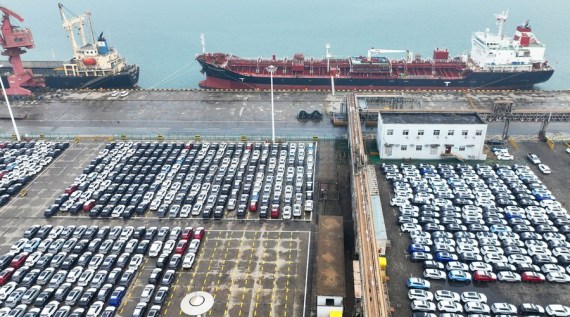How China contributed to global economic stability amid the pandemic — and what comes next
In the early stages of the outbreak, China employed timely and strict measures, leading to an economic recovery at home and stability worldwide.

By Liang Guoyong
Three years into a devastating COVID pandemic, China continues to anchor the global economy and provide much-needed stability.
In the early stages of the outbreak, China employed timely and strict measures, leading to an economic recovery at home and stability worldwide.
China’s contributions were reflected in its stable production and robust exports that had supported a global economic recovery on the supply side and through sound macroeconomic policies conducive to the country’s steady economic growth and the world.
As Omicron became the dominant sub-variant, countries generally loosened control and liberalized their economies. For China, the rebound of the pandemic and other factors added downward pressure on the economy.
However, China has stabilized its fundamentals through a variety of policies. Furthermore, China’s price levels have remained stable despite high inflation globally, adding to global economic stability. The last thing the world needs is out-of-control inflation in China.
Looking forward to 2023, China’s economy will enter the “post-pandemic era” and is expected to achieve rapid growth. The following reasons support such an outlook.
First, the suppressive effect of the pandemic on economic growth has lasted for three years, and China failed to reach its true potential last year. As its direct impact is quickly eliminated, China’s economy is expected to rebound.
Second, despite the pandemic, the Chinese economy has maintained strong resilience and growth momentum, which should become more evident in the post-pandemic era.
Third, there is still great potential for China’s macroeconomic policies. As maintaining steady growth remains a policy goal, fiscal and monetary policies will play a more active role in promoting economic growth.
Fourth, confidence in both the corporate and residential sectors is expected to improve.
The savings rate among Chinese has risen sharply in 2022, reflecting an unwillingness to consume or buy property. Expect things to change in 2023. The economy will benefit if suitable policy measures can be adopted to guide these massive savings to house purchases and consumption.
Over the next three to five years, the global economy could experience low growth, low momentum, high inflation and high risks. The monetary policies of major developed economies are expected to bring significant uncertainty to the global economy.
However, many internal factors support relatively rapid growth for China’s economy in 2023. And as the world’s second-largest economy, China will once again play a leading role in world economic growth.
Expanding Chinese imports will bring new opportunities for other economies, and the return of Chinese tourists will benefit service industries worldwide.
With its relatively stable price levels amid high global inflation and massive exports of more affordable commodities, China will undoubtedly act as a stabilizing force in the world economy.
Editor’s note: Dr. Liang Guoyong is a senior economist of the United Nations Conference on Trade and Development.
The views expressed in this article are those of the author and do not necessarily reflect the positions of Xinhua News Agency.






